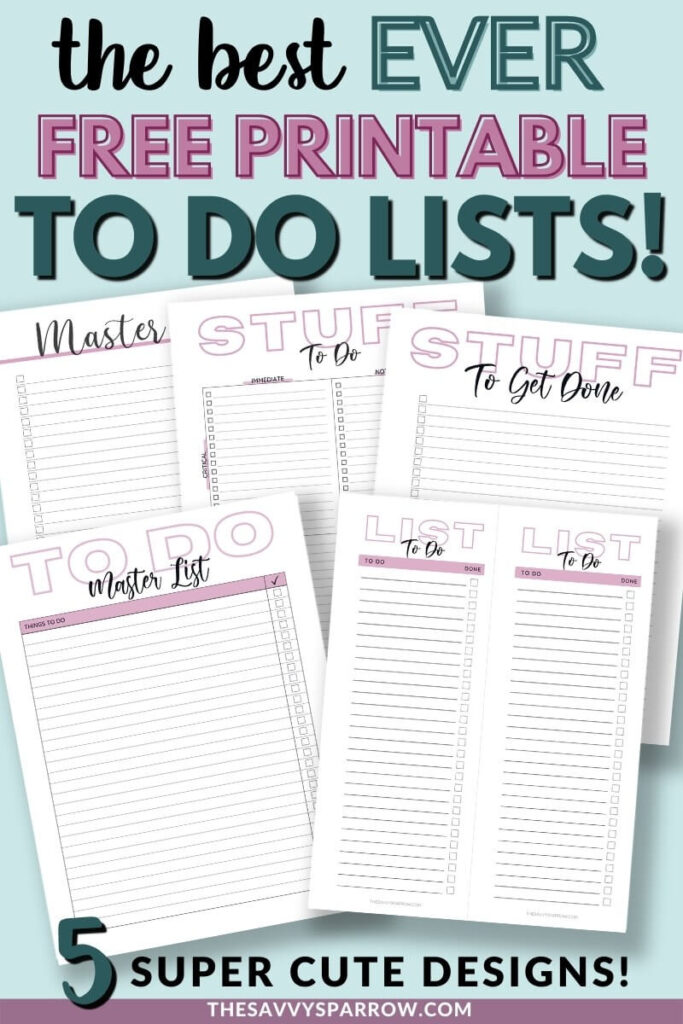

Have you ever had so many tasks you need to accomplish pinging around in your brain that you just…don’t do any of them?
You’re constantly thinking of the roughly twenty loads of dirty laundry that need to be washed, grocery shopping, meal planning so that you can go grocery shopping, cleaning the toilets (UGH), and that’s just the tip of the domestic chore iceberg.
Don’t even get me started on the kids and spouse side of things. And if you’re also working outside the home, staying organized may seem like a pipe dream.
Because let’s face it — the mom life is even harder today than it ever has been. And when you’re constantly thinking of everything you haven’t done yet, it’s much easier to just avoid those tasks altogether and binge-watch your favorite TV series instead.
Unfortunately for both you and that mile-long to do list, ALL of those tasks will still be waiting for you when that last episode is over.
Luckily, there’s a solution to feeling perpetually stressed, overwhelmed, and paralyzed by the sheer mass of “stuff” you’re required to tackle on a daily basis.
It’s called a Master To Do List, and you can use it to get organized, prioritize tasks, save time, and (most importantly) keep your sanity.
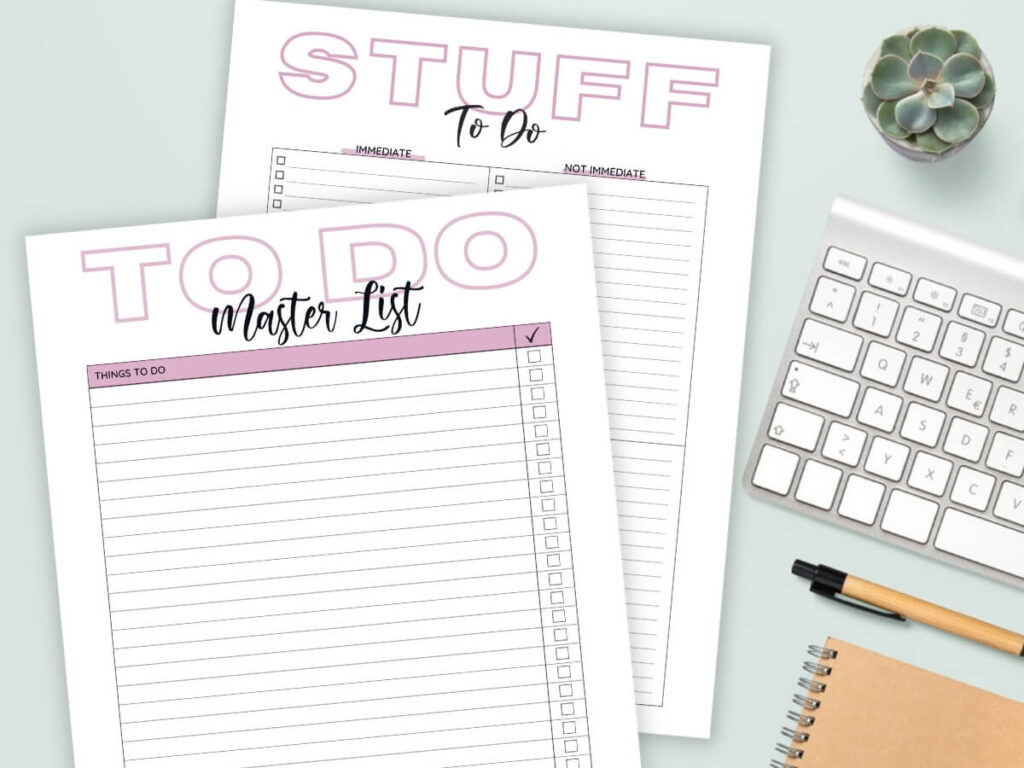
In this post, we’ll take a deep dive into what makes a Master To Do List different from everyday task lists, why you need one, which format is best for you, and more helpful tips. I’ve even included some Free Printable Templates to help you get started!
A master to do list is essentially an ongoing list of tasks you need to accomplish over the course of a week, a month, or even longer. You will always add to your master list and check off things as you complete them. Many people choose to break their chores and tasks into categories and sub-categories, which is something I do as well.
If your goal is to complete everything on your master to do list by the end of each month, you might create a new one at the beginning of the following one. The beauty of a master task list is that it’s totally customizable to work best for your life. The goal here is a less-stressed, happier YOU.
*You can also create a monthly to do list for tasks that have to be completed each and every month. Grab some awesome free printable monthly to do lists here!
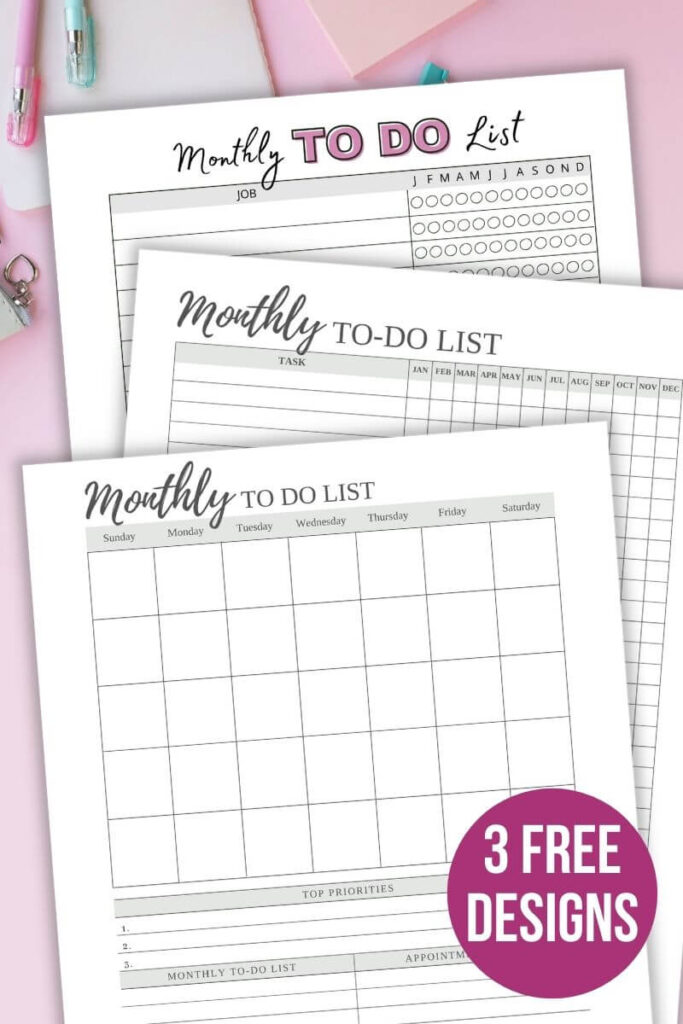
As you’ve probably guessed by now, a master to do list is NOT a daily task list. There’s no earthly way you’ll be able to check off all those boxes in 24 hours…unless you’re Hermione Granger in Harry Potter and the Prisoner of Azkaban. In which case, could I borrow your time turner?
If you don’t possess magical abilities, you can always add each day of the week as a section of your master task list, which makes perfect sense. This way, you have everything divided up into more achievable “chunks” within your larger framework.
Here are just a few benefits of creating a master to do list:
Remember the endless tasks I mentioned earlier that are just whirling around your brain, bumping into each other and taking up your brain space? Constantly thinking about what you haven’t done yet can be incredibly overwhelming, and it takes your focus away from other areas of your life that need your full attention.
A famous study by psychologist Bluma Zeigarnik confirmed that “the act of planning activities through to do lists reduces the burden on the brain.”
I think that’s an excellent way to think of this – my brain feels weighed down when I never actually put pen to paper and write down my thoughts.
A master to do list is essentially a brain dump of all of those distracting items you’ve yet to check off as complete. Transferring them onto paper helps to declutter your brain, reduce those feelings of overwhelm, and take the first step towards a more organized version of yourself.
If you want to try this activity out yourself, snag my free brain dump template!
One of the major benefits I’ve experienced since creating a master to do list has been increased productivity. When I was just attempting to keep a mental task list each day, I would often start one thing, only to get distracted by three others things. At the end of the day, none of them were totally finished.
A master to do list helps you prioritize tasks from most to least important so that you’re not constantly task-hopping. That way, you’re more focused and less likely to become distracted.
Does that mean you suddenly have the ability to ignore a screaming toddler who just threw their spaghetti at the wall? No…that one needs your immediate attention. The list just enables you to refocus once you’ve finished cleaning up the mess.
It comes as no surprise that a study by professors Baumeister and Masicampo (Wake Forest University) found that when people took the time to make a to do list, they became less stressed and anxious. Participants who were given a task and allowed time to write down steps towards achieving their goal performed significantly better than those in the study who didn’t write anything down at all.
I am much less stressed since I started the practice of making a master to do list, and it feels great to check things off as I accomplish them. Although every day isn’t equally productive, I am much more at peace with what I have been able to do by the end.
Making your own master to do list can seem intimidating at first, but if you break down the process into steps, you’ll be on your way to a less anxious, more organized version of YOU.
Not all master to do lists have to have the same format (After all, we’re not all the same!). Here are a few suggestions for different ways to structure your to do list:
If you’re someone who lives by your daily or weekly planner, you can easily create a master to do list by breaking down and prioritizing tasks for each day of the week.
You’ll also have the satisfaction of physically checking off items each day, which in turn motivates you to keep going. If you’re in the market for an amazing planner for moms, check out the Purpletrail Planner. It’s awesome!
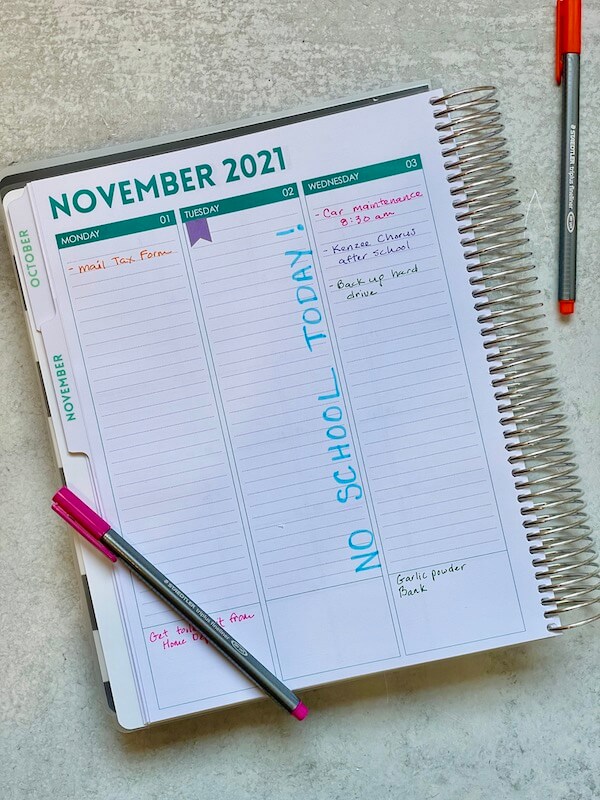
There’s an endless number of task list apps for just about every type of person, especially for those who prefer to stay organized using their electronic devices.
Some to do list apps are better than others, and it really comes down to how user-friendly they are and your comfort level with using them.
If you prefer creating your master to do list on your phone or tablet but want to avoid downloading yet another app, you can always just use the ‘Notes’ section instead.
Google Keep or Evernote are both excellent options for keeping thoughts and tasks organized, and they don’t cost anything to use.
Aside from to do list apps, you can also input your tasks and prioritize them in a digital spreadsheet like Google Sheets or Excel. The benefit of Google Sheets is that you can access it anywhere, whereas you can only update your Excel spreadsheet file from one device.
Some of us (Ahem, me!), like to have a specific task list printout so that we can mark and erase to our heart’s content. That’s why I’ve included 5 different free printable to do lists at the end of this post for you to download and customize according to your schedule and priorities.
I know how overwhelming the mom life can be, and I want to help!
There’s also no hard-and-fast rule that you can’t use a combination of multiple master to do list formats. For example, you may keep your main to do list in your planner at home, but you jot down items in your phone’s Notes app throughout the day.
Then you work those tasks into your master list when you have some downtime each evening. The important thing about this process is finding what works for you and doing it consistently.
Now comes the fun part! This is where we take any and every task that’s been floating around your noggin for the past forever and put it down on paper (or a Google Doc, Notes app, whatever floats your organizational boat).
It’s called a Brain Dump, and while it sounds a little gross, this process is essential to the whole master to do list creation process. A brain dump has two parts:
1. Recording ALL of your thoughts and ideas – writing them down
2. And NOT criticizing or judging yourself – there aren’t any bad thoughts or ideas!
Doing a brain dump has many of the same benefits as creating a to do list, but it’s just the first step toward organizing and prioritizing tasks. You can use my free brain dump template to get everything down on paper and then work on breaking everything down into categories and sub-categories.
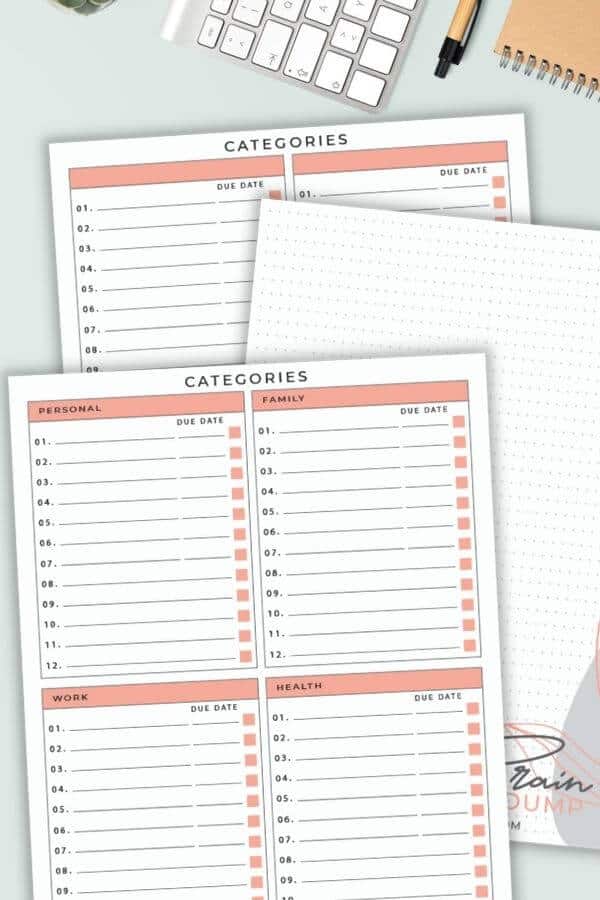
Next, you’ll need to decide how you’re going to organize the items on your list. That’s why I like to do a brain dump first because it helps me determine how to best lay out my final master to do list.
One way to structure your master to do list is by sorting tasks into different categories. Some examples include:
You can make your categories as general or as specific as you please – whichever helps you and reduces your stress levels!
It’s also important to remember that your master to do list will reflect whatever season of life you’re currently experiencing. It will never look exactly the same from one year – or even one month – to the next.
Another way to organize your to do list is by urgency. Things that need to get done ASAP go at the top, and other lower-priority tasks go further down. Or you could make columns with high, middle, and low-priority categories. Totally up to you.
This is similar to the Eisenhower Decision Matrix, and one of my free printable master to do list templates at the end of this post is perfect for this!
You may be more of a free spirit when it comes to creating your master to do list and prefer not to categorize your tasks at all. It could be easier for you to simply jot items down as you think of them, and that works too.
There is no one “right” way to complete this process.
Now it’s time to add everything from your brain dump template to your master to do list.
Get excited! This means you’re on your way to a more carefree version of yourself. So, get out that planner, open that task planning app, or sit down with your free master to do list printable and get to work!
Once you get going, make sure to adjust your list as you need to. This could include:
Depending on your master to-do list format, this could take a few minutes or a half-hour.
Most to do list apps automatically archive your items once you’ve marked them complete, so all you have to do is add more tasks as you think of them. However, if you’re writing them down or using the template, the process may look a little bit different.
Want to grab my free printable master to do list templates to help you organize your task list? You can just click on the links below the PDF templates that you want, or download them all to see which one works best for you!
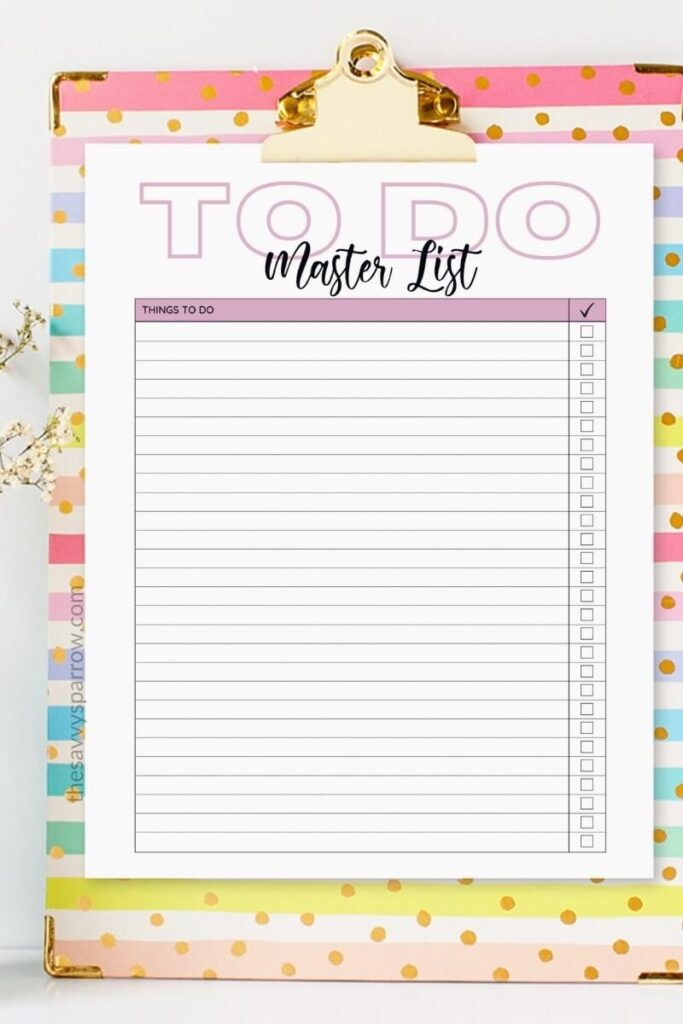
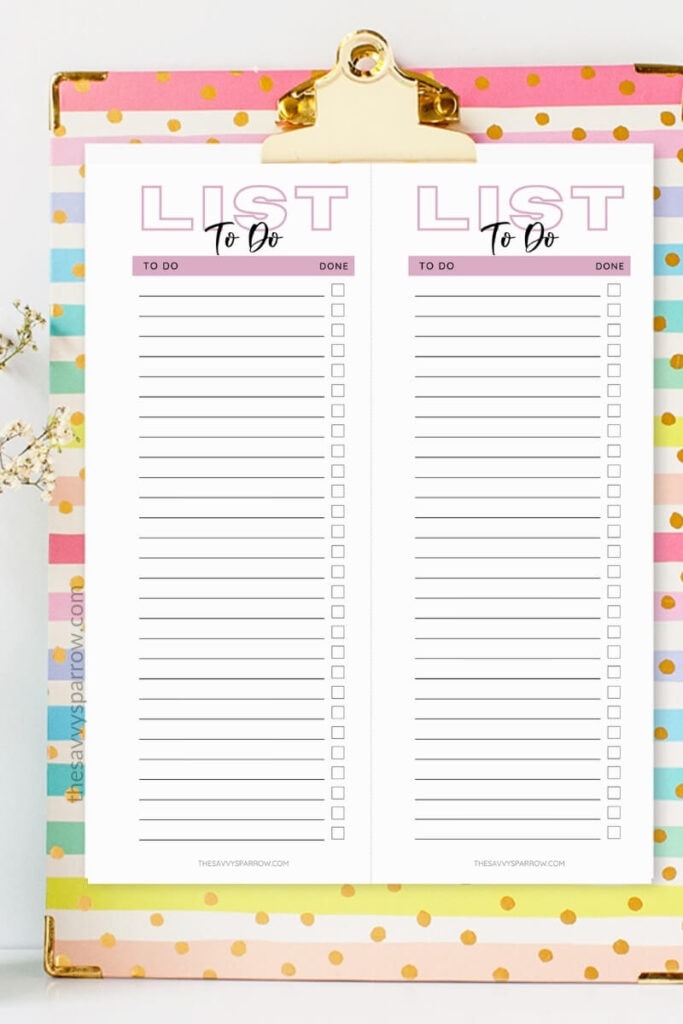
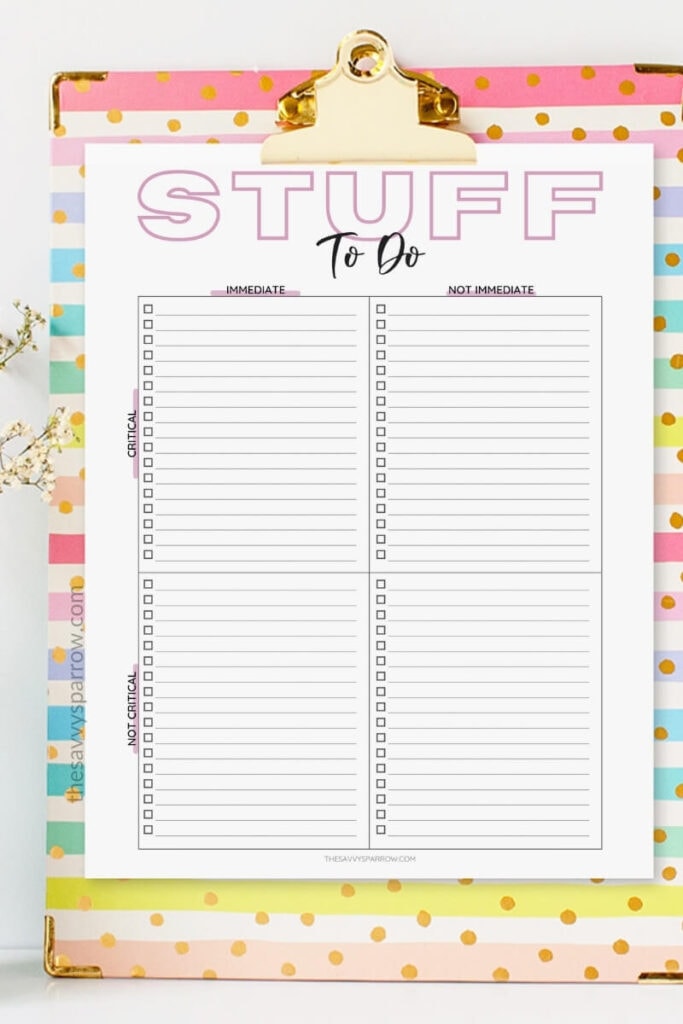
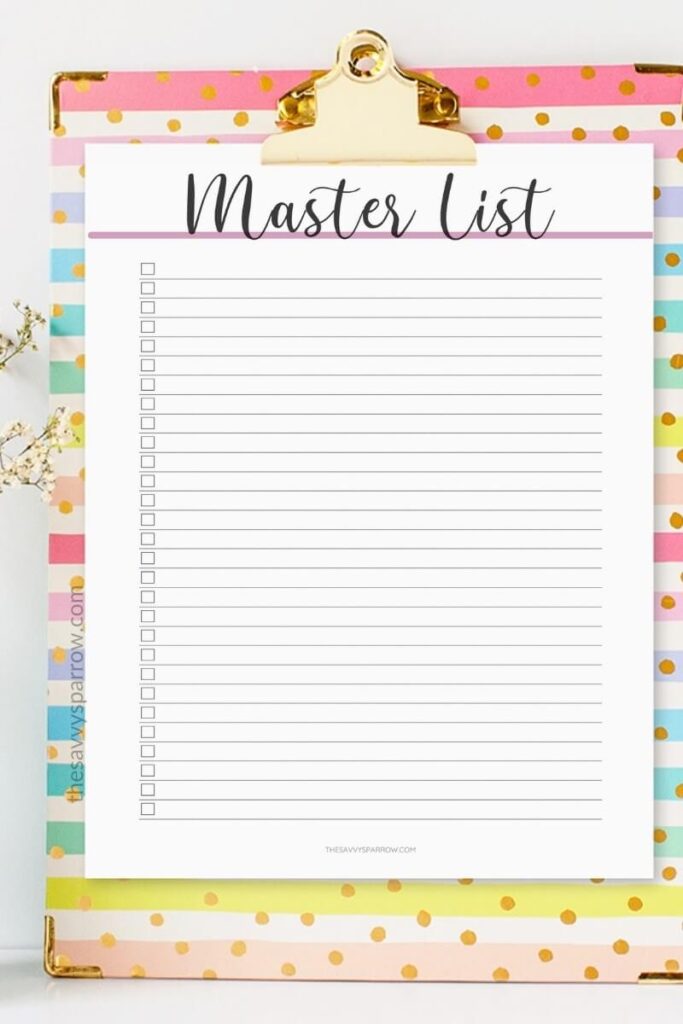
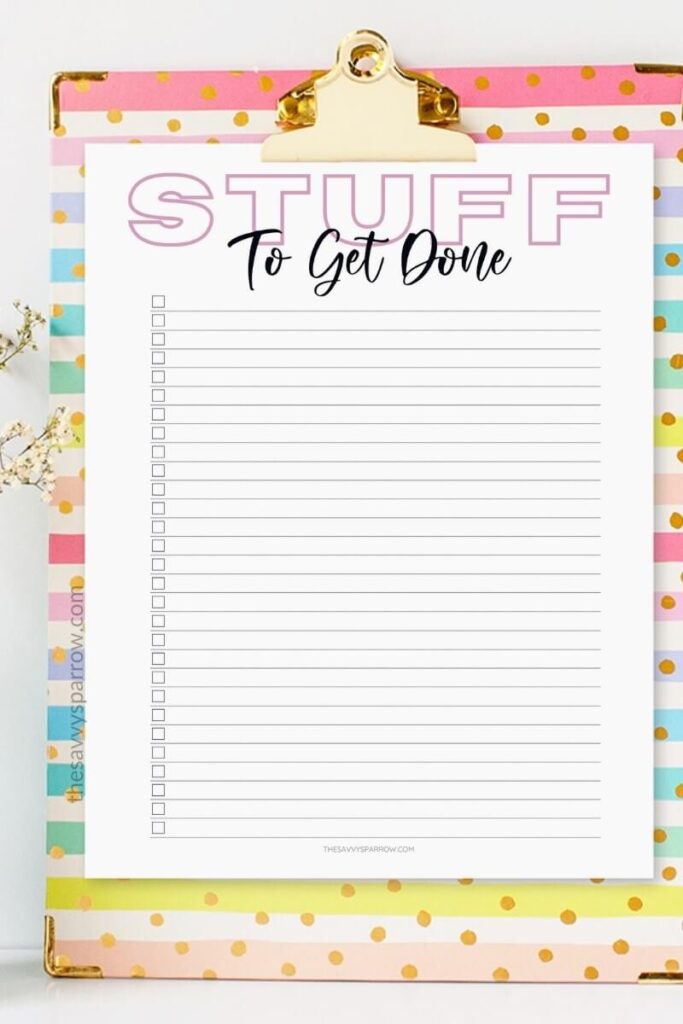
I want you to get the most out of this epic list-making adventure, so here are a few tips I’ve learned from my personal to-do list journey.
Trying to organize what seems like your entire life in one sitting can be very overwhelming for some people. I know it was for me, at first! The great news is that if staring at a mile-long to do list brings on the eye twitch you only get when your mother-in-law is staying with you, there are easy solutions for that.
I’m afraid you’re on your own with the mother-in-law.
To avoid feeling overwhelmed, start by completing the easiest items on your master to do list. These can be quick five or ten-minute tasks that you can quickly mark complete. Not only does it help you take that first big step into this new habit, but it also gives your brain a nice big hit of dopamine for accomplishing something. It’s a win-win.
There is no master to do list police waiting to pounce on you for switching up your approach, so don’t be afraid to tweak your strategy as necessary. If you find that your list format isn’t working for you, adjust it until you find something that you can stick with.
This is a learning process, after all. I mean, most of us don’t have the same haircut or beauty routine we did in high school. But, as we grow, we change. And thank goodness – those were some dark days…
Although a year-long planner that comes with all the bells and whistles may be nice, it may not be the most practical, especially if you’re constantly on the go. It’s best to make your master to do list as portable as possible so that you can easily access and add to it when you need to. Or at least have a plan for jotting things down while you’re out and about so that you can add to your main to do list when you get home.
As with any new habit, you have to commit to using your master to do list consistently until it becomes second nature. You can create 542 to do lists, but if you don’t actually USE them, they’re not really helping you.
According to the results of one study, researchers found that “on average, it takes more than two months before a new behavior becomes automatic — 66 days to be exact.” Of course, the length of time varies by person, but that was the average.
I recommend committing to the process for at least 30 days so that it becomes part of your normal, everyday routine. The most important thing is that you continue to stick with it even if you slip up every now and again.
If you loved these master to do list templates, then be sure to check out some of my other printable lists that can help you get organized around the house:
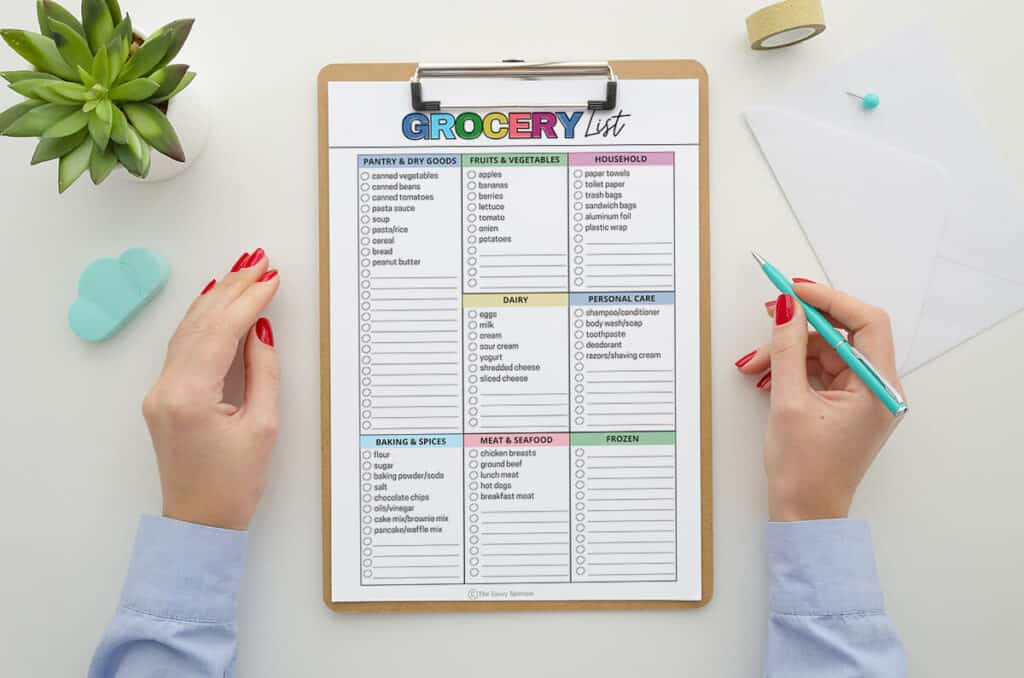
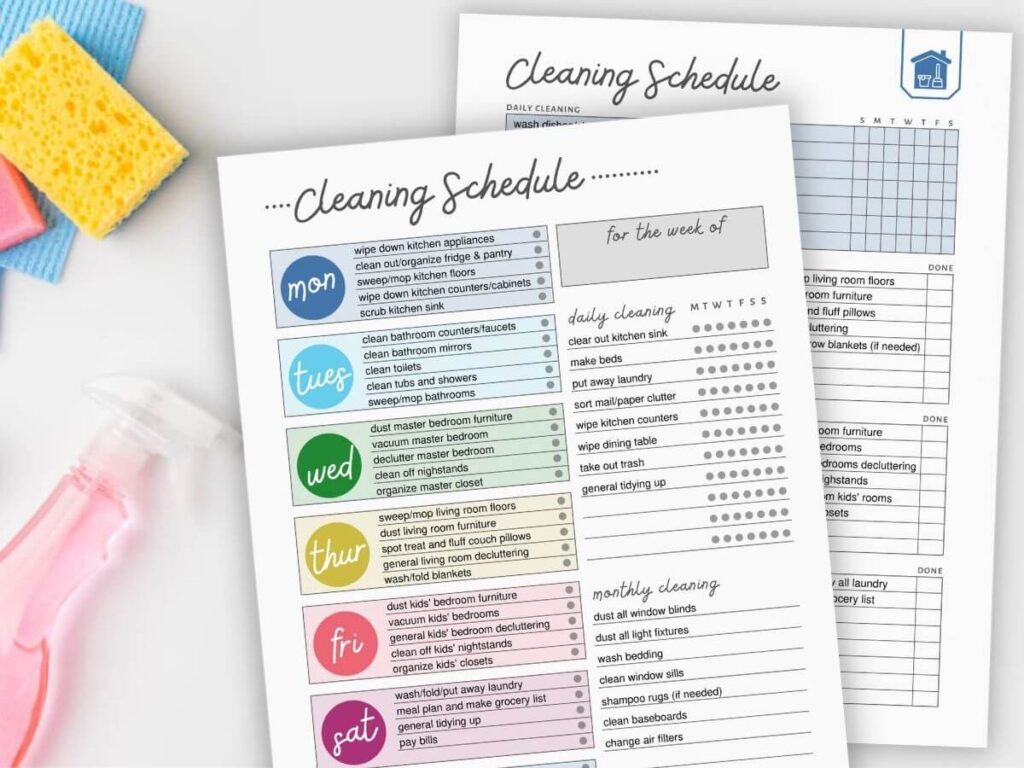
I hope you enjoy these printable master task list templates, and I hope they help you to be more productive with your time!
Have you reduced your stress and anxiety by creating and sticking with a master task list? I’d love to hear about your list-making journey!
Tell me about your experience – and any pro tips you have – in the comments below!
And don’t forget to PIN this post for later: